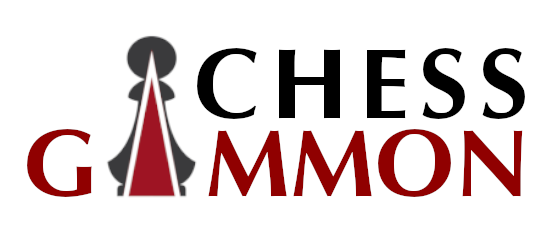- Introduction to the Falkbeer Counter-Gambit
- History of the Falkbeer Counter-Gambit
- How to Play the Falkbeer Counter-Gambit
- Common Variations in the Falkbeer Counter-Gambit
- Advantages and Disadvantages of the Falkbeer Counter-Gambit
- Famous Games featuring the Falkbeer Counter-Gambit
- Tips for Success when using the Falkbeer Counter-Gambit
Introduction to the Falkbeer Counter-Gambit
Today, let’s dive into the fascinating world of the Falkbeer Counter-Gambit. If you’re looking to spice up your chess games and catch your opponents off guard, this counter-gambit might just be the perfect choice for you. Feel free to also look at our article 40 Famous Chess Moves to Learn.
But what exactly is the Falkbeer Counter-Gambit, you ask? Well, this bold opening is a response to the King’s Gambit, where Black sacrifices a pawn to gain quick development and put pressure on White’s center. It’s a dynamic and aggressive choice that can lead to exciting and unpredictable positions on the board.
Playing the Falkbeer Counter-Gambit requires a mix of tactical acumen and strategic foresight. By familiarizing yourself with the key ideas and variations of this opening, you can tilt the balance in your favor and outmaneuver your opponent.
So, if you’re ready to shake things up and inject some adrenaline into your chess games, buckle up and let’s explore the world of the Falkbeer Counter-Gambit together!
History of the Falkbeer Counter-Gambit
Have you ever heard of the Falkbeer Counter-Gambit? It’s a fascinating opening in chess that has a long and interesting history. Let’s dive into the origins and evolution of this unique gambit.
The Falkbeer Counter-Gambit is named after the Austrian chess master Ernst Falkbeer, who introduced it in the mid-19th century. The gambit arises after the moves 1.e4 e5 2.Nf3 d5, where Black sacrifices a pawn in order to gain quick development and open lines for their pieces. This daring and aggressive approach has made the Falkbeer Counter-Gambit a favorite among those who enjoy playing unconventional and dynamic chess.
Over the years, the Falkbeer Counter-Gambit has been analyzed and played by many top players, leading to its inclusion in the repertoire of adventurous chess enthusiasts. Its rich history and strategic complexities have made it a popular choice for players looking to surprise their opponents and steer the game into uncharted territory.
One of the key aspects of the Falkbeer Counter-Gambit is its tactical nature, where both sides have to navigate through sharp and unpredictable positions. This can lead to dynamic and exciting games, where creativity and resourcefulness are key to success. The gambit offers a fertile ground for players to test their tactical skills and willingness to take risks in pursuit of victory.
While the Falkbeer Counter-Gambit may not be as
How to Play the Falkbeer Counter-Gambit?
This bold opening is sure to catch your opponent off guard and lead to some exciting gameplay. But how exactly do you play the Falkbeer Counter-Gambit? Let’s break it down step by step.
**1. e4 e5 2. Nf3 d5**
The Falkbeer Counter-Gambit begins after the moves 1. e4 e5 2. Nf3 d5. By playing d5 on the second move, Black immediately gives up a pawn to disrupt White’s center and create imbalances on the board. This move signals your intention to play aggressively and seize the initiative early on.
**3. exd5 e4 4. Qe2 Nf6**
After White captures the pawn on d5 with exd5, Black plays e4 to attack the knight on f3. White will typically respond by moving the queen to e2, defending the knight and attacking the e4 pawn. Black continues development with Nf6, putting pressure on White’s center and preparing to castle.
**5. Nc3 Be7 6. Nxe4 O-O**
White continues developing with Nc3, attacking the e4 pawn. Black responds by castling kingside, bringing the rook into play and securing the king’s
Common Variations in the Falkbeer Counter-Gambit
If you’re looking to add some excitement and unpredictability to your chess game, then the Falkbeer Counter-Gambit might be just the strategy for you. This aggressive opening allows Black to counter White’s King’s Gambit by sacrificing a pawn for rapid development and attacking chances.
Here are some common variations in the Falkbeer Counter-Gambit that you should be aware of:
1. Accepted Variation
In this variation, White accepts the gambit pawn and gains material advantage. However, Black gains rapid development and active piece play in exchange for the sacrificed pawn. This variation usually leads to sharp, tactical positions where both sides have chances.
2. Declined Variation
In this variation, White declines the gambit pawn and opts for a more solid approach. White aims to maintain the material advantage and pressurize Black’s position while avoiding any complications. Black needs to be careful not to fall into a passive position in this variation.
3. Deferred Variation
In this variation, White delays the decision to accept or decline the gambit pawn and focuses on developing their pieces first. This allows White to maintain flexibility in the opening and choose the best approach depending on Black’s reactions. Black should be prepared for various pawn structures and piece placements in this variation.
4. Modern
Advantages and Disadvantages of the Falkbeer Counter-Gambit
But before you dive in headfirst, it’s essential to understand the pros and cons of this intriguing opening. Let’s take a closer look at the advantages and disadvantages to help you make informed decisions on the board.
**Advantages:**
1. **Surprise Element:** One of the significant advantages of the Falkbeer Counter-Gambit is its element of surprise. Many opponents may not be familiar with this particular opening, giving you a chance to catch them off guard and take control of the game early on.
2. **Uncertainty:** By opting for the Falkbeer Counter-Gambit, you introduce an element of uncertainty into the game. This can throw off your opponent’s game plan and force them to think on their feet, giving you a strategic advantage.
3. **Dynamic Play:** The Falkbeer Counter-Gambit encourages dynamic play, allowing you to create imbalances on the board and push for aggressive attacks. This can lead to exciting and unpredictable games, keeping both players on their toes.
4. **Development:** Playing the Falkbeer Counter-Gambit can lead to rapid development of your pieces, putting pressure on your opponent from the start. This can help you establish a strong position early in the game and maintain the initiative.
**Disadvantages:**
Famous Games featuring the Falkbeer Counter-Gambit
Are you ready to dive into some thrilling chess matches that showcase the Falkbeer Counter-Gambit in action? Let’s explore some famous games that have left a mark in the chess world:
1. Adolf Anderssen vs. Jean Dufresne (1852):
This historic game between two prominent chess players is a classic example of the Falkbeer Counter-Gambit in action. Anderssen, playing as Black, executed the counter-gambit beautifully, leading to a spectacular victory.
2. Paul Morphy vs. Duke Karl / Count Isouard (1858):
Paul Morphy, known for his brilliant tactical skills, utilized the Falkbeer Counter-Gambit in this iconic game. His strategic play and precise execution showcased the power of this opening to secure a decisive win.
3. Mikhail Tal vs. Larsen (1965):
The legendary Mikhail Tal, known for his aggressive playing style, employed the Falkbeer Counter-Gambit to outmaneuver his opponent in this memorable game. Tal’s creativity and tactical genius were on full display, leaving a lasting impression on chess enthusiasts worldwide.
These are just a few examples of the Falkbeer Counter-Gambit in action, highlighting its versatility
Tips for Success when using the Falkbeer Counter-Gambit
Whether you’re a seasoned chess player looking to add a new strategy to your repertoire or a beginner intrigued by the idea of this bold opening, it’s important to approach it with the right mindset and a solid game plan. Here are some tips to help you make the most of your Falkbeer Counter-Gambit experience:
**1. Familiarize Yourself with the Opening**
Before diving into a game with the Falkbeer Counter-Gambit, take the time to study and understand the key principles behind this opening. Knowing the main ideas, common themes, and typical tactics associated with the Falkbeer Counter-Gambit will give you a solid foundation to build upon during your games.
**2. Practice, Practice, Practice**
As with any new opening, practice is key to mastering the Falkbeer Counter-Gambit. Play plenty of games to get a feel for the unique positions that can arise from this opening. The more you play, the more comfortable you will become with the nuances and intricacies of the Falkbeer Counter-Gambit.
**3. Stay Flexible**
While the Falkbeer Counter-Gambit is a bold and aggressive opening, it’s important to remain flexible and adapt to your opponent’s moves. Don’t be afraid to deviate from the main lines if it






